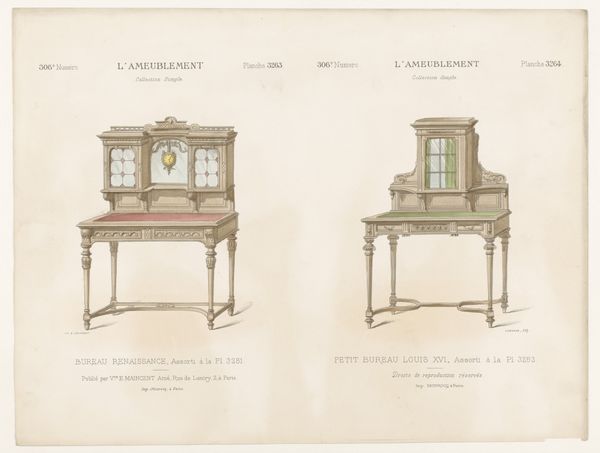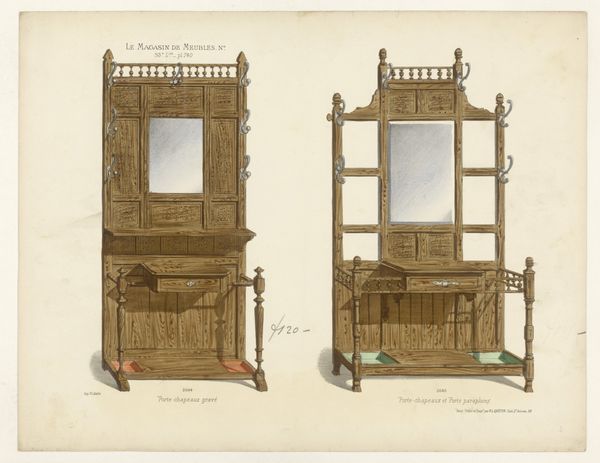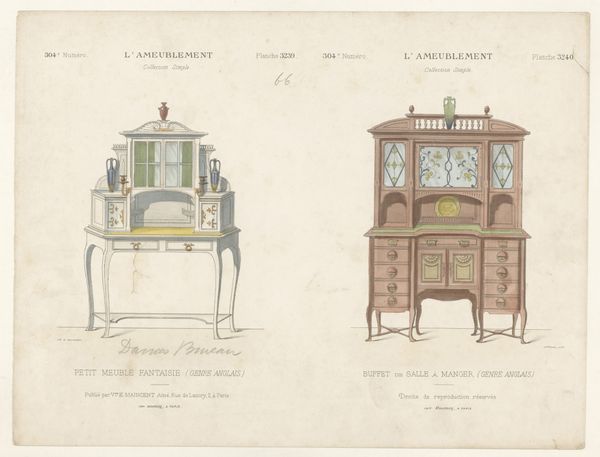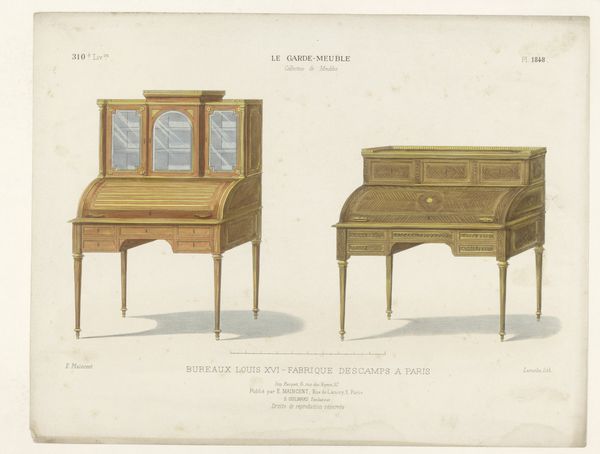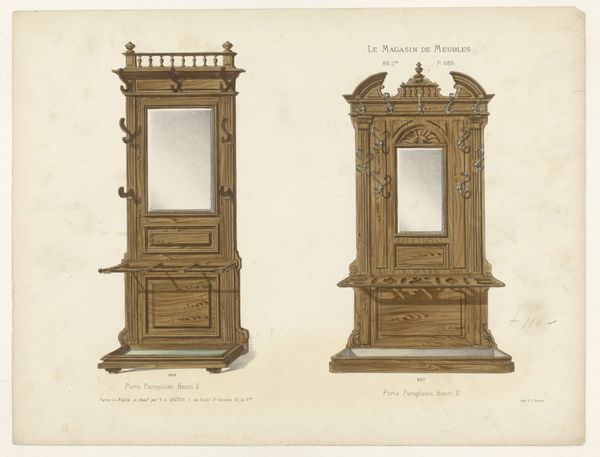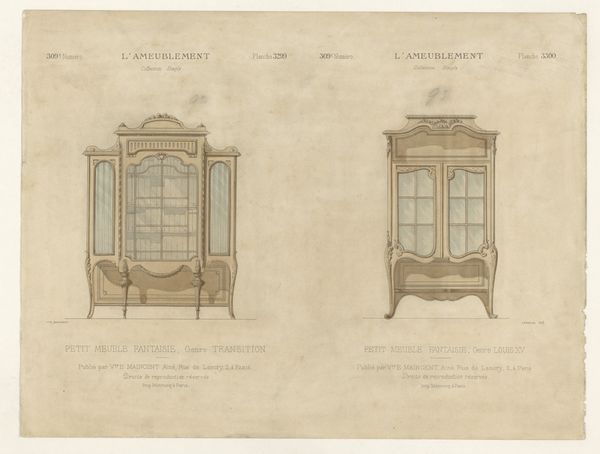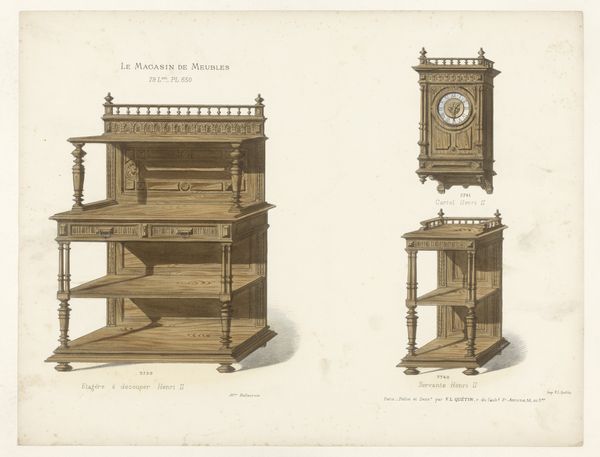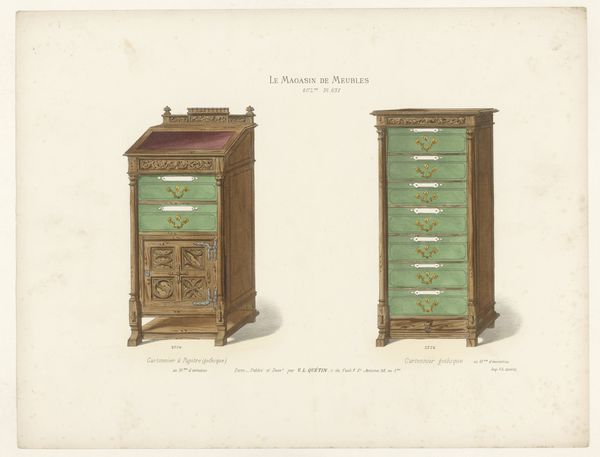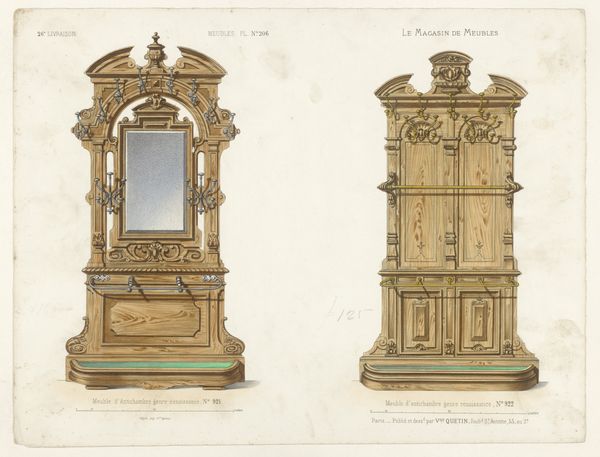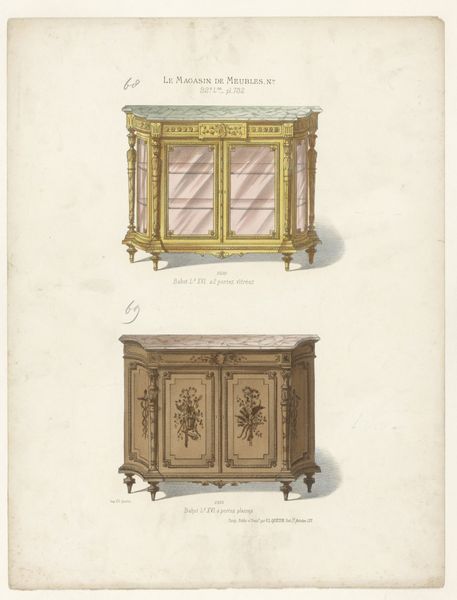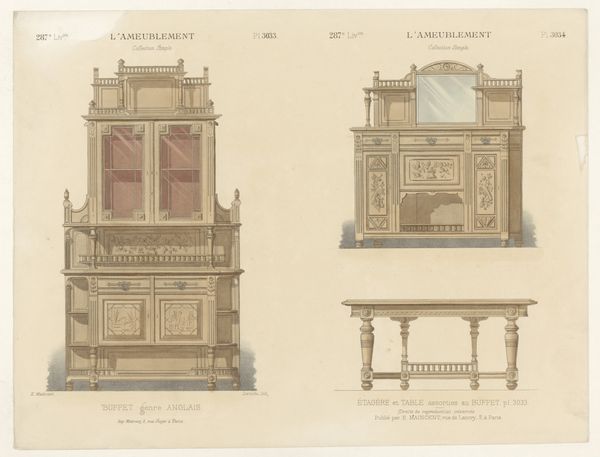
Dimensions: height 277 mm, width 359 mm
Copyright: Rijks Museum: Open Domain
Here, we see two bureaus depicted in delicate lines, rendered anonymously. Note the mirror in the bureau on the right, a symbol, since antiquity, of self-awareness and reflection. The mirror motif appears throughout art history. Consider Jan van Eyck's "Arnolfini Portrait," where a convex mirror reflects the entire scene, expanding our perception. Or, in the myth of Narcissus, where the reflection leads to self-obsession and death. The presence of the mirror invites introspection. Furniture, too, carries symbolism. The cabinet of curiosities from the Renaissance evolved into these refined bureaus, holding precious knowledge and secrets. Think of a painting by David Teniers the Younger, where cluttered cabinets reveal a world of intellectual pursuit and the desire to contain and understand the world. Objects like these engage with our psyche, evoking both curiosity and a longing for knowledge. They echo through time, transforming yet retaining their core—the human desire for self-understanding and mastery of our surroundings.
Comments
No comments
Be the first to comment and join the conversation on the ultimate creative platform.

